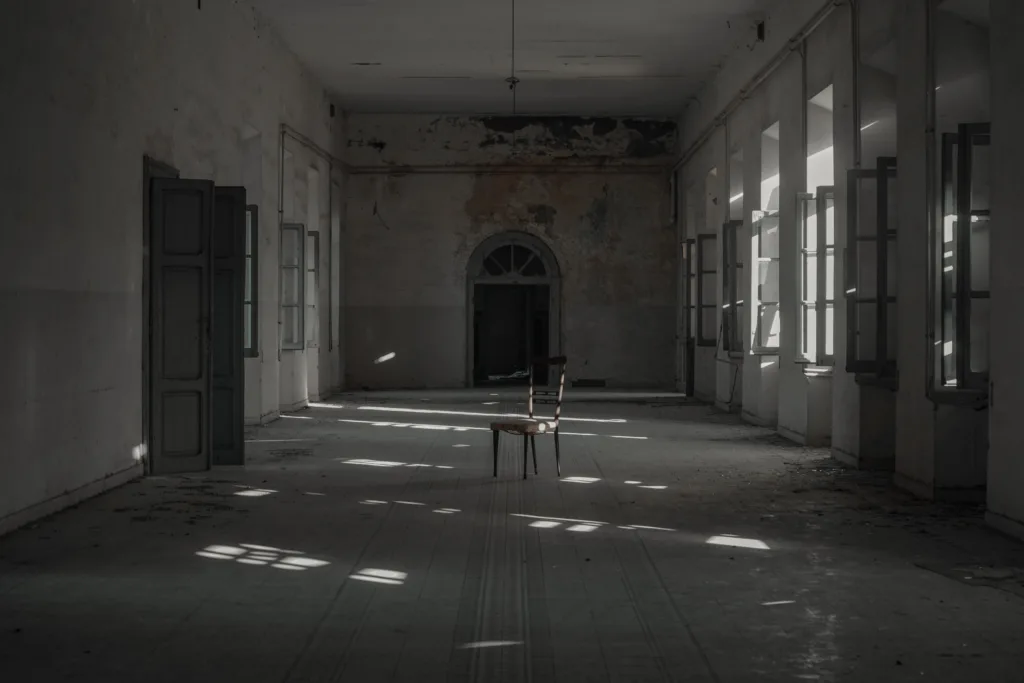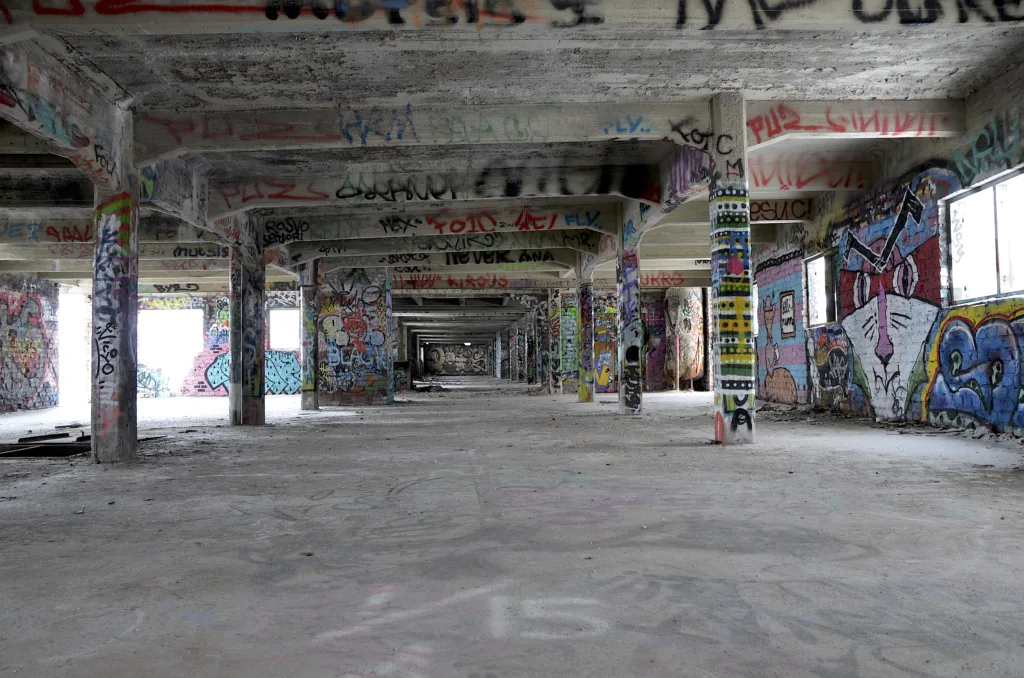Liminal spaces have an eerie quality that can make even the most ordinary places feel uncanny. This sense of unease arises from the fact that liminal spaces exist in a state of transition, between two diferent states or conditions. They are places where we are neither here nor there, neither fully present nor fully absent. This sense of being in-between can be unsettling, as it creates a feeling of uncertainty and unpredictability.
The feeling of creepiness that we associate with liminal spaces is related to the concept of the uncanny valley. This term refers to the phenomenon of feeling repulsed or disturbed by objects or beings that are almost, but not quite, human. This can include dolls, puppets, and robots that have a human-like appearance but lack the warmth and spontaneity of living beings. Similarly, liminal spaces can feel creepy because they are almost familiar, but not quite. They are places that we might recognize from our everyday lives, but they have been transformed into something strange and unsettling.
One example of a liminal space that many people find creepy is an abandoned building. These structures are often in a state of disrepair, with peeling paint, broken windows, and crumbling walls. They are places that were once bustling with activity, but are now silent and empty. When we enter an abandoned building, we are confronted with the remnants of past lives: discarded furniture, old photographs, and other personal belongings. This can create a sense of unease, as we realize that the people who once inhabited this space are gone, leaving behind only traces of their existence.
Another example of a liminal space that can feel creepy is a deserted street at night. When we walk down a street that is normally crowded with people and activity, but is now empty and silent, we can feel as though we are walking through a ghost town. The absence of other people can create a sense of vulnerability, as we become aware of the potential dangers that could lurk in the shadows. This feeling of vulnerability is intensified by the fact that the street is a transitional space, a place that we pass through on our way to somewhere else.
Liminal spaces can be creepy because they exist in a state of transition, between two different states or conditions. They are places that are almost familiar, but not quite, creating a sense of unease and uncertainty. This feeling of creepiness is related to the concept of the uncanny valley, which refers to the phenomenon of feeling repulsed or disturbed by objects or beings that are almost, but not quite, human. Whether it’s an abandoned building or a deserted street at night, liminal spaces can leave us feeling unsettled and vulnerable, reminding us of the fragility of our own existence.
Why Are Liminal Spaces Creepy?
Liminal spaces are often perceived as unsettling or creepy due to the uncanny valley effect. This effect describes our discomfort with objects or entities that are almost, but not quite, human-like in appearance or behavior. This discomfort arises because we are programmed to recognize and respond to human-like traits, but when those traits are not quite right, it can trigger a sense of unease or revulsion. This effect can be seen in dolls, puppets, clowns, and super-realistic robots, as well as in liminal spaces, which exist in a state of transition between two diffeent environments or states. The ambiguity of these spaces can create a feeling of disorientation, as our brains struggle to categorize and make sense of our surroundings. This can be compounded by a lack of sensory cues, such as lighting or sound, which can further heighten our sense of unease. liminal spaces are creepy due to the uncanny valley effect, which arises from the discomfort we feel when confronted with entities that are almost, but not quite, human-like in appearance or behavior.

What Is Liminal Horror?
Liminal Horror is a tabletop role-playing game that involves a Facilitator and at least two other players. The game is designed to simulate a modern world where players act as investigators, navigating through spaces filled with terrible and unknowable things that are lurking and looking for a way in.
The game is rules-lite, meaning that it has a simple set of rules that are easy to understand and follow. It also features a fail forward mechanic, which means that even if a player fails at a task, the story will continue to progress, creating a sense of urgency and tension.
The world of Liminal Horror is one filled with darkness and uncertainty, with players having to deal with the unknown and the inexplicable. The game is designed to be a horror experience, with players beng forced to confront their fears and face the horrors that lurk in the shadows.
Liminal Horror is a game that provides a unique and immersive experience for players, transporting them to a world of darkness and terror, where they must navigate through the unknown and face their fears head-on.
What Is The Deal With Liminal Spaces?
Liminal spaces are transitional or in-between places or states that individuals can find themselves in. These spaces can be physical, such as a doorway or hallway, or they can be metaphorical, such as a period of uncertainty or decision-making. Liminal spaces can also be emotional, such as durig a divorce or a major life change. Essentially, liminal spaces are areas of ambiguity, where an individual is neither in one state nor fully in another. They offer a unique opportunity for growth and transformation, but can also be challenging and uncomfortable. By acknowledging and embracing liminal spaces, individuals can navigate transitions more effectively and ultimately emerge stronger and more resilient.
Why Do People Like Liminal Spaces?
Liminal spaces have gained popularity because they offer a unique sense of comfort in the face of impending change. As transition zones between two distinct environments, they provide a sense of safety and familiarity while also allowing for exploration and discovery. People are drawn to liminal spaces because they offer a temporary escape from the chaotic and often overwhelming world around us. They provide a sense of calm and introspection that is difficult to find elsewhere. Additionally, liminal spaces have been romanticized in literature and art, contributing to ther allure and fascination. the appeal of liminal spaces lies in their ability to offer a sense of balance and stability in an uncertain world.

Conclusion
Liminal spaces have been found to evoke a sense of uneasiness and creepiness in individuals due to the phenomenon of the uncanny valley effect. As transitional places, they represent a gap between two states, and this in-between state can be unsettling for some. While liminal spaces may offer a strange solace in times of change, they can also be a source of discomfort and fear. It is important to recognize the power and impact that these spaces can have on our emotions and to take the time to understand and explore our reactions to them. By acknowledging and embracing the liminal spaces in our lives, we can learn to navigate them with a greater sense of awareness and control.
